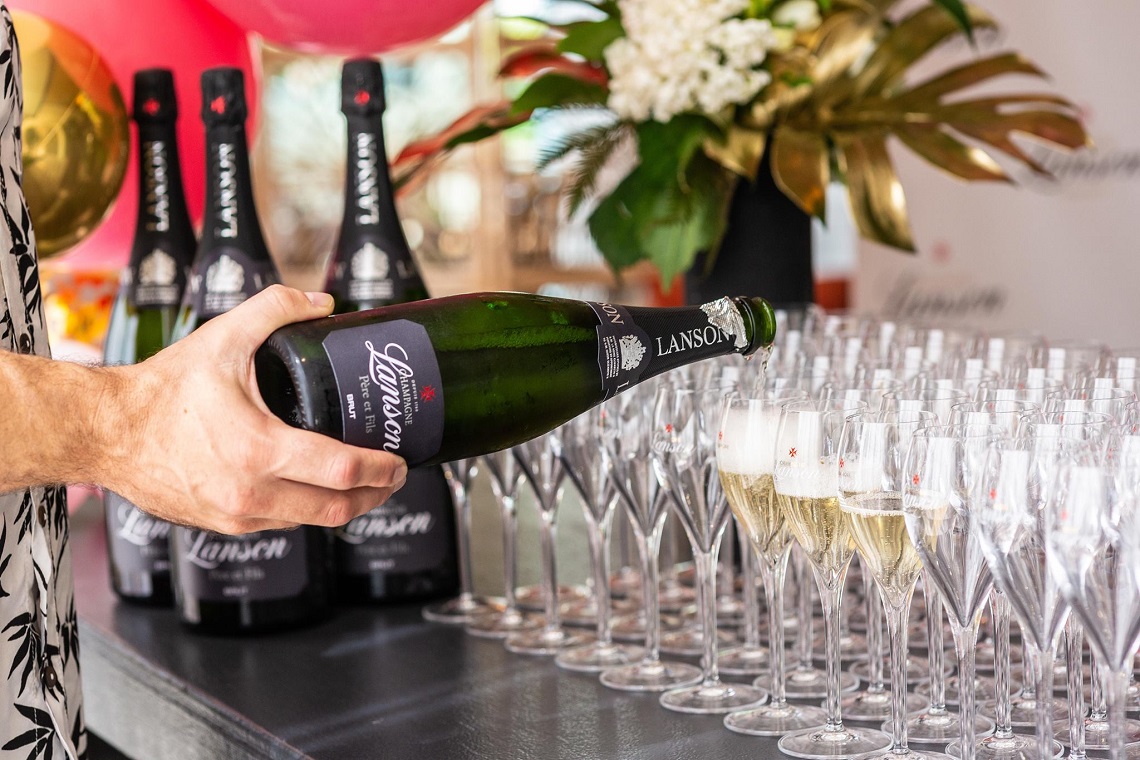The association between celebration and sparkling wine is one of the strongest and most enduring within the drinks world. A celebration wouldn’t be a celebration without the popping of corks. Within the sparkling wine category, however, no varieties have captured the imagination in the same way as Champagne.
Made in one small area in north eastern France for hundreds of years, Champagne benefits from the region’s chalky soil and cool climate to produce wines with “delicate fruit flavours with high levels of natural acidity that are ideal for the production of sparkling wines with a lot of finesse”, according to Charlotte Agard, Business Development Manager Oceania at Champagne Lanson.
Sparkling wine consumption has been growing for a number of years, with Champagne seeing double digit growth in 2015, although this had diminished to four per cent by 2017.
The sparkling wine category encapsulates a wide variety of styles, from Italian Proseccos to Spanish Cavas, as well as a burgeoning local scene here in Australia, with incredible sparkling wines from regions like Tasmania, Grampians and King Valley helping to drive growth. Another factor in the boom that the sparkling category is experiencing in Australia is undoubtedly the quality of the wines coming from these and other local regions.
That quality is great news for consumers, retailers and the trade as a whole, and with such a wide range of high quality sparkling wines being produced, it gives consumers confidence to explore wines across the category.
It is because of the exploration that Agard believes it is important to recognise the variation within sparkling wine to ensure that consumers are able to make informed decisions, and this is where opportunities lie for retailers to explain the differences in the category.
“The Champagne category has probably been impacted by the general economical conditions, with the falling house prices, rising mortgage rates and fuel costs making customers feel less wealthy and weighing their spending on one side and the rise of the Australian sparkling on the other side. While the latter is an excellent trend for all sparkling wines as more people come into ‘bubbles’, I think it is important to continue explaining the differences and diversity available to the shopper,” she said.
The most obvious difference between Champagne and other sparkling wines is the price, but it is the story behind that higher price that needs to be told. Agard believes that retailers need to understand and then explain the additional points of difference between Champagne and other styles to illuminate its premium position on the shelf.
Agard explains: “The premium price is due to the cost of making wine in Champagne. The cost of a kilo of grapes is over $10, three times the price of Tasmanian grapes and 20 times the price of Australian mainland grapes. The fruit must be grown within the Champagne region, has to be hand-picked only and strict yields must be respected.
“The blending process is one of the most skillful arts, which Champagne Houses and winemakers have been doing for hundreds of years. The region has been producing wines for more than 2,000 years and Champagne Houses producing Champagne for close to 300 years.
“Champagne must be made using the traditional method or méthode Champenoise with the secondary fermentation happening in the bottle followed by the disgorgement process. This is the most labour-intensive method compared to the carbonation, tank or transfer methods used by most sparkling wines.
“The length of the ageing is also a huge factor. The standards of the Champagne appellation impose the blended wines to be aged in bottle for a minimum of 15 months on lees for non-vintage champagnes and three years on lees for vintage champagnes. Champagne Lanson ages its non-vintage champagnes for minimum three years and its vintage champagnes for five years.”
Even within the strict guidelines of producing Champagne there are opportunities for producers to do somethings differently, and this brings variety to wines within Champagne.
As Agard explains, as well as ageing its wines for longer, Champagne Lanson is committed to the traditional winemaking method of avoiding malolactic fermentation. This commitment is reflected in the House style with refreshing mouth-watering fruity notes and a great ageing potential. Other styles in Champagne include more mellow, baked fruit, pastry notes.
These unique specialities should form the basis for showcasing Champagne as separate within what is a diverse sparkling wine category, allowing it and Australian varieties to thrive alongside each other.
“Diversity is key and more than ever shoppers need assistance to explore,” concluded Agard.

